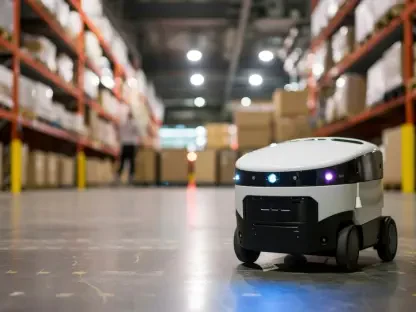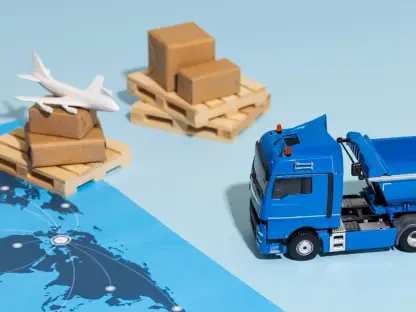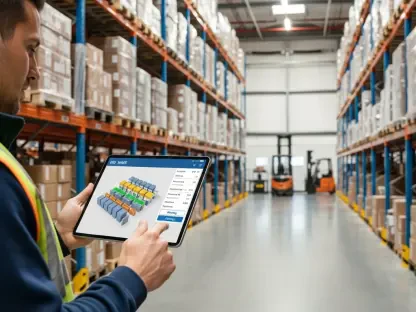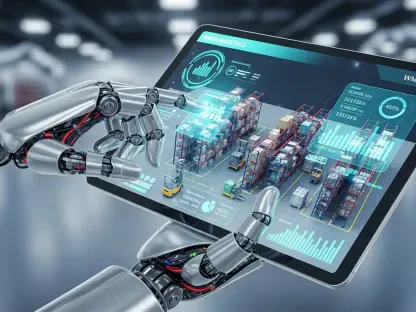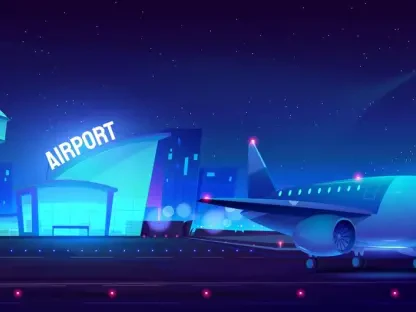The rise of AI-powered robotic automation has dramatically transformed the warehousing and logistics sectors, generating significant buzz in the industry. This technological revolution promises not only to enhance operational efficiency but also to redefine how businesses manage inventory and fulfill orders. With innovations such as the Autopicker and the Giraffe robot, companies like Brightpick and its partner, Thistle Systems, are pushing the boundaries of automation technology. This review delves into the intricacies, advancements, and real-world applications of AI-powered robotic automation, offering an insightful exploration of its impact on modern industry practices.
Components and Functionality of AI-Powered Robotics
AI-powered robotic automation integrates several key components vital to ensuring smooth operations within warehouses. At its core, the technology leverages artificial intelligence to optimize robotic navigation and order fulfillment processes. Autonomous navigation allows robots to efficiently move within warehouse spaces, utilizing sensors and AI algorithms to avoid obstacles and map routes. These advancements lay the foundation for seamless operations, streamlining the storage and retrieval processes that are critical for minimizing manual labor and errors.
One notable feature of this technology is intelligent order fulfillment. AI-driven robots handle tasks such as picking items and replenishing stock with precision, drastically reducing human error. The implementation of machine learning models enables robots to continuously improve their performance by analyzing patterns and adapting to new tasks. This proficiency is transforming logistics operations, significantly advancing productivity and reducing costs, ultimately delivering impressive results in both speed and accuracy.
Emerging Innovations and Industry Trends
Recent years have seen a surge in innovations shaping the AI-powered robotic landscape. Developments in machine learning algorithms have refined robots’ task execution abilities, allowing them to learn and improve autonomously. The industry is witnessing a shift toward automated systems as consumer demand for faster and more accurate order fulfillment grows. New trends in robotic development, such as the integration of advanced sensors and AI for predictive analytics, are driving the industry to develop smarter, more adaptable robotics solutions.
This increasing reliance on automation is changing not only industry practices but also consumer behavior. With immediate access to goods becoming the norm, e-commerce giants and retailers are investing heavily in automation to meet high demand sustainably. Strategic partnerships, such as that between Brightpick and Thistle Systems, underscore the move toward comprehensive robotic solutions. These collaborations are crucial in catalyzing growth and facilitating the widespread adoption of cutting-edge technology within the sector.
Practical Implementations and Industry Impact
AI-powered robotic automation is making significant strides across diverse industries, including retail and logistics. The practical applications of these technologies range from enhancing e-commerce efficiency to revolutionizing inventory management. Robots such as Autopicker and Retriever are playing critical roles in advancing order processes and optimizing stock management. Implementations in high-density storage benefit from Giraffe robots, allowing businesses to maximize space utilization and streamline workflows.
Notable use cases further highlight the advantages of automated systems in reducing operational bottlenecks and accelerating service delivery. In logistics, robots improve warehouse efficiency by performing repetitive tasks that traditionally took considerable manpower. Companies adopting robotic automation experience lowered costs and improved scalability, positioning themselves competitively in the fast-paced digital marketplace. These successes demonstrate the transformative impact of AI in driving business growth and technological evolution.
Challenges and Opportunities
Despite its potential, AI-powered robotic automation faces several challenges. Technical hurdles such as seamless integration and ensuring security during operations must be addressed. Regulatory landscapes are evolving, demanding adherence to compliance standards, which can prove complex for new implementations. Furthermore, market resistance to adopting such transformative technologies poses obstacles in some sectors, where traditional methods are still preferred.
Efforts to tackle these challenges are underway, with industry stakeholders collaborating to improve technology reliability and safety. Initiatives encouraging consumer trust in robotic systems are pivotal in overcoming barriers. Continuous research and development are essential in realizing efficient solutions and propelling the technology forward. As these challenges are addressed, the opportunities for innovation and enhanced performance promise considerable gains for industries venturing down this path.
Envisioning the Future of Robotic Automation
The evolution of AI-powered robotic automation is set to continue at a rapid pace, offering unprecedented opportunities for innovation and improvement. Potential breakthroughs could include enhanced learning capabilities of autonomous robots and broadened functionalities tailored to specific industry needs. As automation integrates more deeply into everyday operations, businesses are likely to see considerable gains in efficiency, accuracy, and longevity of their processes.
Industries should prepare for a future where AI-powered systems play a significant role in operational and strategic decisions. Technological advancement will drive increased capabilities for robots to perform complex tasks and adjust to dynamic environments. By capitalizing on these developments, organizations can position themselves at the forefront of innovation, ready to navigate and shape the evolving landscape of robotic automation.
Summary and Insights
AI-powered robotic automation has profoundly reshaped warehousing and logistics by introducing advanced robotics capable of transforming operational landscapes. The review highlighted the fundamentals, applications, and challenges that encapsulate this transformative technology. While hurdles remain, the momentum of advancements and growing industry adoption signals a promising path ahead. Businesses embracing innovations in robotic automation are not only staying competitive but are paving the way for a more efficient, agile future. As industries continue integrating AI-driven solutions, their performance improvements and strategic capabilities will redefine benchmarks and drive sustainable success across sectors.


